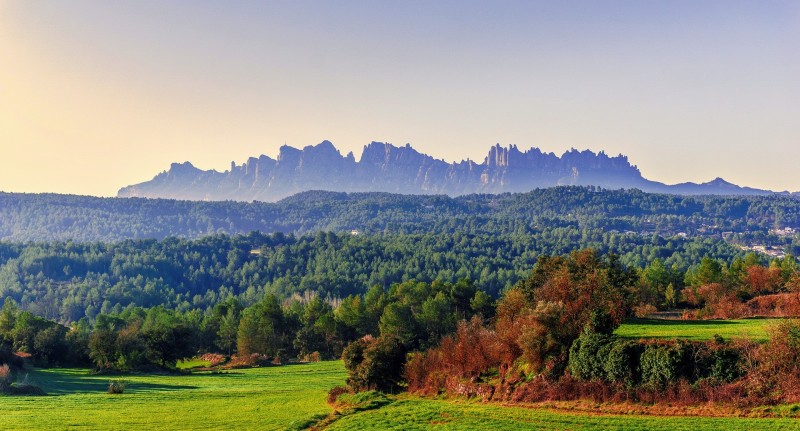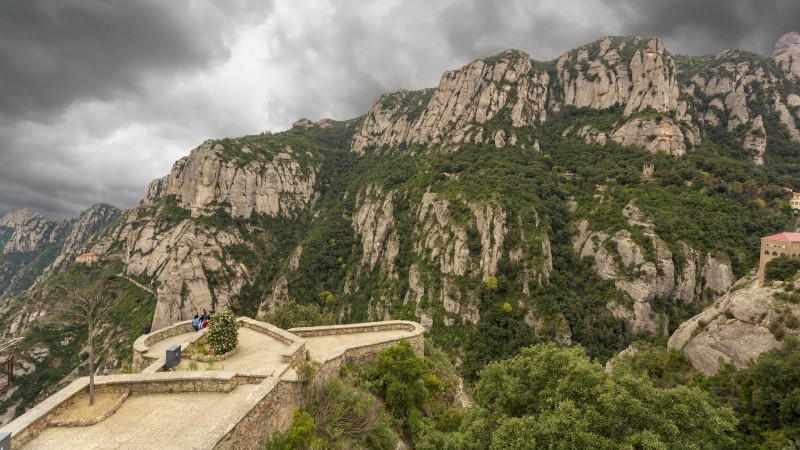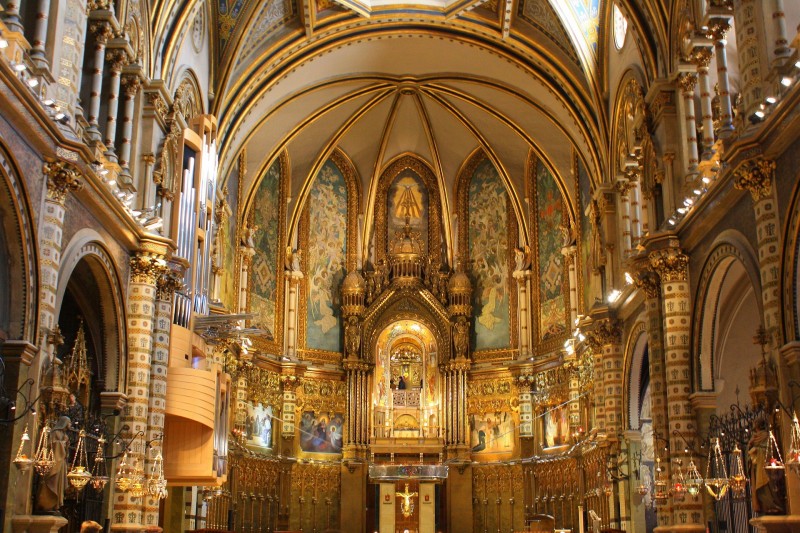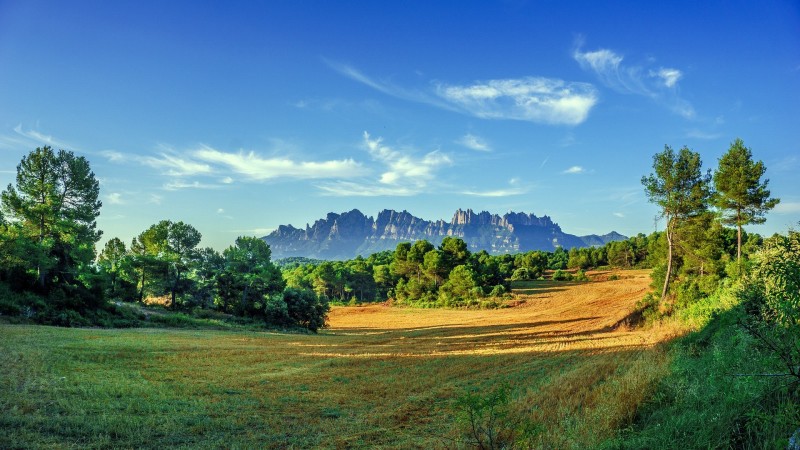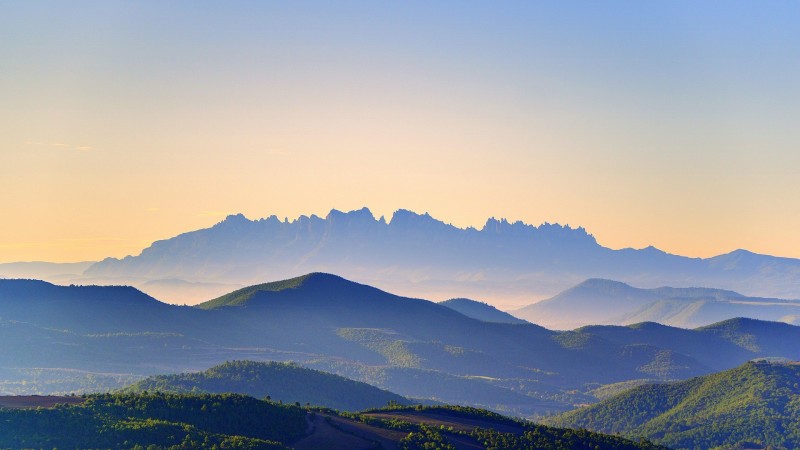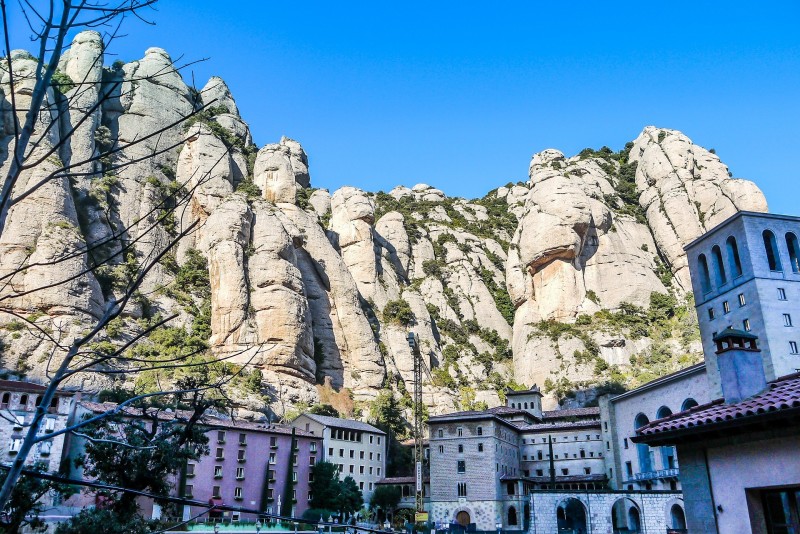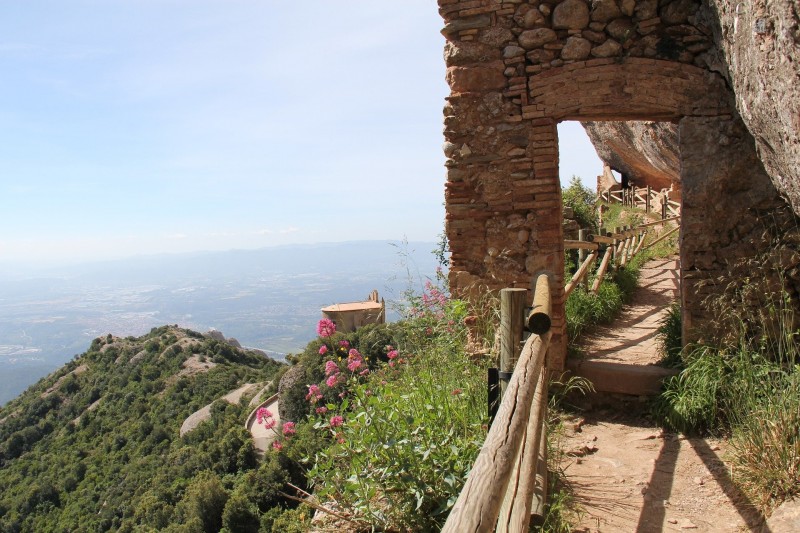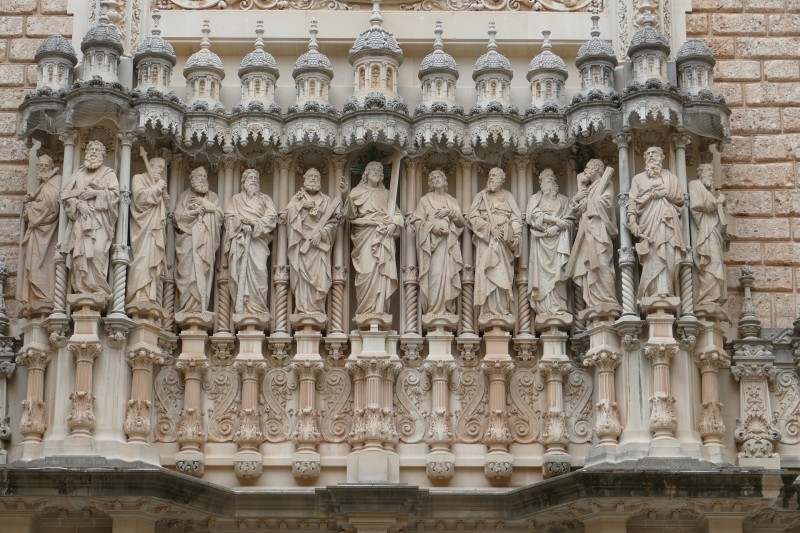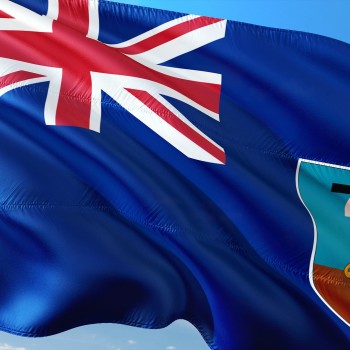Montserrat
Montserrat
Capital city description
Plymouth is a ghost town and the de jure capital of the island of Montserrat, an overseas territory of the United Kingdom located in the Leeward Island chain of the Lesser Antilles, West Indies.
Constructed on historical lava deposits near the then long-inactive Soufrière Hills volcano, the town was evacuated in 1995 when the volcano resumed erupting. Plymouth was eventually abandoned permanently in 1997 after it was substantially burnt and buried mainly by a series of pyroclastic flows and lahars. It had been the only port of entry to the island for centuries. Plymouth is still the de jure capital of Montserrat, making it the only ghost town that is the capital of a political territory. New capital is under construction at Little Bay, with nearby Brades serving as the de facto capital for the time being.
Climate
The climate in Montserrat is warm, oppressive, windy, and partly cloudy. Over the year, the temperature typically varies from 73°F to 87°F and is rarely below 71°F or above 89°F.
Languages spoken
The official language is English, but most Montserratians also speak the Creole language, similar to Jamaica's.
Fun/Fascinating Facts
- The name Montserrat means “Jagged or serrated mountain” because of the sharp-looking peaks of the mountain. According to the legend, angels came down from the sky and serrated the mountain with the golden saw to create a throne for the Virgin Mary.
- The Monastery of Montserrat is largely a reconstruction; Napoleon´s army destroyed it at the beginning of the 19th century. Only a few walls from the original monastery are standing.
- The choir of Montserrat Escolania is the oldest choir registered in Europe in the 14th century. Over 50 boys aged between 9 and 14 usually stay there until puberty. The selection for the choir boarding school goes according to three criteria: musical talent, academic achievements, and social adaptation.
- The library of Montserrat contains over 300,000 books, most written in the 14th and 15th centuries from religious subjects, humanities, music, and science. It mostly has a restricted entrance to professors, researchers, and monks.
- Montserrat has always attracted all sorts of people, always was the point of interest. There is one particularly curious example of attracting someone not so good; during WW2, Heinrich Himmler came to Montserrat searching for the Holy Grail.
Unique Customs/Traditions
- The people are well known for their lavish hospitality, respect for seniors, honesty, and sincere generosity. To this day, a visitor will be given tea and food before even being allowed to explain why he has visited!
- Children’s first birthday celebrations, known as kemem, are among the most crucial. Montserratan family gatherings. Extended family and friends celebrate with tunes and massive feasts. Religion is also an essential part of Montserrat culture, and most residents have fairly conservative ideas on nudity and alcohol.
- Most of Montserrat’s population are descendants of people who reached the island against their will. These include the enslaved Africans brought to the Caribbean and Irish indentured servants who came to Montserrat during the 16th century. Irish influence remains strong here, which has celebrated St Patrick’s Day as an official public holiday since 1768 when a failed slave uprising broke out during Ireland’s national holiday.
- Montserrat’s music contains several African influences, such as shak-shak instruments made from calabash gourds. Cricket is Montserrat’s most popular sport, and the British subjects are happy to welcome foreigners to their casual and peaceful lifestyle.
- Recently Montserrat decided to throw the Calabash Festival: Explosion of Culture, which occurs in July of each year. It offers a good perspective of Montserrat culture. The festival is named after the fruit/vegetable that historically locals used to make eating utensils and musical instruments. At the festival, the food fair shows an assortment of locals. In other words, this festival offers the island's diverse culture, with its strong musical and artistic culture, reflective of many of the Caribbean islands and its Irish and African backgrounds.
Popular universities
| Name | Description | |
|---|---|---|
| Montserrat Community College | Montserrat Technical College (MTC) was in operation, and additionally, the Montserrat Secondary School (MSS) provided vocational education and a sixth-form college. The community college was built with an estimated cost of more than six million Eastern Caribbean dollars; it funds by the UK Department for International Development and the European Union. Montserrat Community College Act 2003 established the college. MCC opened in 2004, taking over sixth-form studies from MSS. Initially, classes were held at the former Salem Primary School. MCC's current campus opened on August 28, 2005. "For the past two years, students at the college have undertaken short weekly personal development sessions entitled 'My Time' on topics from Financial Planning and Savings to managing stress, sexuality, and ethics. In 2015, principal Vernie Clarice Barnes presented a weekly personal development session on a range of subjects, including stress management, financial planning, sexuality, and morality, to the students. Barnes resigned as principal of the college in October 2017. | |
| University of Science, Arts and Technology | USAT was established and licensed in September 2003 by the Government of Montserrat, a British Overseas Territory, and became International Medical Education Directory (IMED) listed the same year. It locates on the beautiful, friendly, and unspoiled Island of Montserrat, in the heart of the Caribbean. It is now among the fastest-growing schools in the Caribbean Community (CARICOM) and possesses the most extensive Healthcare Professional (HCP) to Medical Doctor (MD) bridge program. Educational philosophy founds on well-established traditional and "time-honored" academic pursuits. Each carefully designed course taught by experienced Professors and clinicians has long-standing academic and professional expertise. | |
| University of the West Indies - Montserrat campus | The Open Campus was established to improve services to the non-campus territories. It brought together several UWI units, namely the University of the West Indies Distance Education Centre (UWIDEC), the School of Continuing Studies (originally the Extra-Mural Department), the Tertiary Level Institutions Unit, and the Office of the Board for Non-Campus Countries & Distance Education. The Open Campus was established to improve services to the non-campus territories. It brought together several UWI units, namely the University of the West Indies Distance Education Centre (UWIDEC), the School of Continuing Studies (originally the Extra-Mural Department), the Tertiary Level Institutions Unit, and the Office of the Board for Non-Campus Countries & Distance Education. | |
Festivals & Events
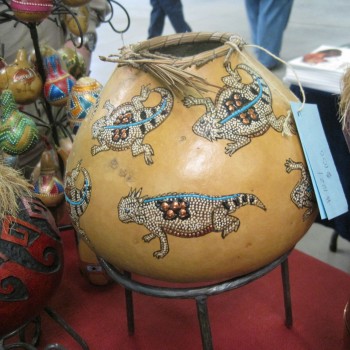
Calabash International Literary Festival
Date: July 16
The Calabash International Literary Festival is a three-day festival in Jamaica. The Calabash Festival has been linked to the iconic calabash fruit, a symbol of our African Heritage. It has been traditionally used to produce eating utensils, musical instruments, fashionable bags, and decorative items. The festival includes a family fun day, hike, island tour, African fashion show, coastal excursions to the former capital city, Plymouth, and a craft and food fair.

CUDJOE HEAD FESTIVAL
Date: July
CUDJOE HEAD FESTIVAL is an annual celebration of Montserrat’s African Heritage started in 1989. This two-day street festival showcases Montserrat’s rich cultural Heritage at the end of July as Montserratians celebrate their African ancestry with festivity and fun.
The festival features live music, vendors, masqueraders, string band, and exhibitions of goods produced in the village of Cudjoe Head.

MONTSERRAT CARNIVAL
Date: December
Montserrat is one of just two Caribbean islands to host the last Carnival of the year and the first – it begins in December and ends on January 1st! This exuberant festival showcases the island’s wealth of talent, music, culture, and history – the perfect climax to the end of the year.
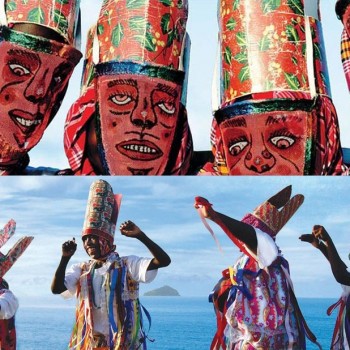
Montserrat's St Patrick's Day Festival
Date: March 17
In Montserrat, the lively festivities marking Ireland's national holiday last an entire week. On the "other emerald isle," St Patrick's celebrates both Ireland and the anniversary of the Montserrat slave uprising on March 17, 1768. The day is marked by plenty of drinking, partying, and a lively parade like in Ireland. However, Montserrat's St Patrick's Day Festival includes masked street dancers called Masqueraders, a recreated slave village complete with a slave feast of local food and a junior calypso competition.
The Freedom Run between Cudjoe Head and Salem Park also takes place along with kite flying, top-spinning, and unique music combining African and Irish influences.
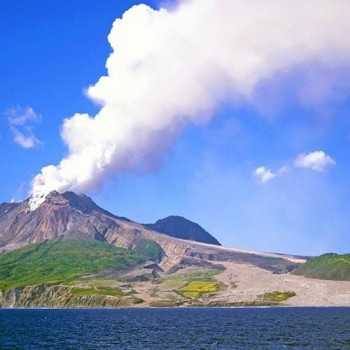
Volcano Half Marathon
Date: June (varies)
Volcano Half Marathon is Montserrat’s biggest running event; the marathon takes participants past the former AIR Studios entrance, the Montserrat Cultural Centre, and Soufrière Hills Volcano. More casual joggers and walkers can participate in the shorter five-mile track. All proceeds go towards Montserrat charities.
Attractions / Top Sights
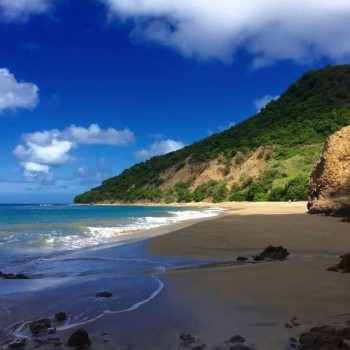
Rendezvous Bay
When to visit: March to May
One of the perfect spots in Montserrat, Rendezvous Bay, is Montserrat's only stretch of blond sand. The bay is ideal for swimming, diving, and snorkeling.
Most visitors access the area by boat or kayak since the hike to this serene stretch of coast is strenuous.
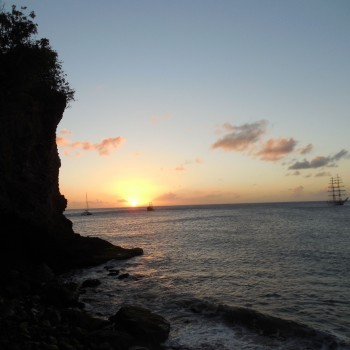
Little Bay Beach
When to visit: In summer
Little Bay Beach is one of the most famous crescents of sand on the island. The best place to swim here is closer to the cliff-backed end of the beach.
The calm waters are great for swimming, snorkeling, relaxing along the gray-sand shore, and watching boats bob in port at the bay's northern end.
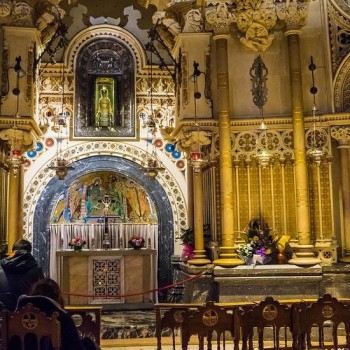
Black Madonna
When to visit: In mid-summer
The Black Madonna statue is one of the most meaningful and famous attractions at Montserrat Monastery. The figure is located in the Montserrat Basilica, framed in an ornate setting overlooking the church's altar. The Black Madonna is sometimes referred to by other names, including 'The Virgin of Montserrat' and 'La Moreneta.'
Each year thousands of pilgrims come to Montserrat to pray in front of the distinctive statue. During busy times there are long queues to see the Black Madonna.

Montserrat Hiking Trails
When to visit: In summer
One of the best Montserrat hikes is to climb Montserrat mountain, all the way up, from the base to the summit. Montserrat is a multi-peaked mountain range reaching 1,236m at its highest summit, Sant Jeroni. The other two prominent peaks are Montgrós at 1,120m and Miranda de les Agulles at 903m.
The Blackwood Allen Trail is one of the more challenging hikes, offering great views and a close-up look at some of the island's unique vegetation. The hike leads past the Blackwood Allen stream to a viewing area that overlooks the ocean and villages in the north.
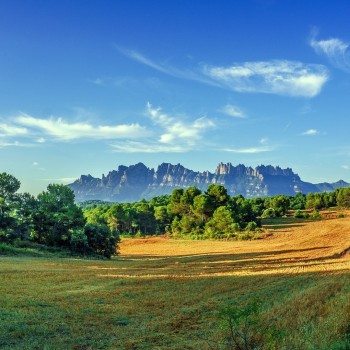
Centre Hills
When to visit: December to April
The Centre Hills is well-known for its biological diversity and rich habitats. It is home to 34 species of land birds and many migrant songbirds, including the threatened Montserrat oriole (the national bird), the rare forest thrush, the bridled quail dove, and the mangrove cuckoo.
The area also harbors many species of reptiles and amphibians and two species of bats.
















